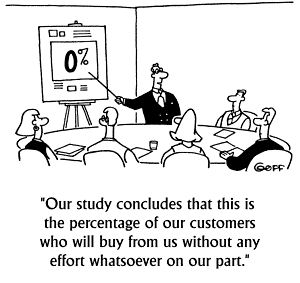
In the fast-paced world of B2B marketing, where competition is fierce and innovation is key, few companies stand out as prominently as Slack. Renowned for its seamless communication platform that has transformed the way teams collaborate, Slack’s journey to success is underpinned by a carefully crafted B2B marketing strategy. Let’s delve deeper into the multifaceted tactics and strategies that have propelled Slack to the forefront of the tech industry.
1. Understanding the Audience:
At the heart of Slack’s marketing strategy lies a profound understanding of its target audience – businesses and teams seeking to streamline communication and enhance productivity. Slack’s marketing efforts are meticulously tailored to resonate with this audience, addressing common pain points such as email overload, fragmented communication channels, and inefficient workflows. By empathising with the challenges faced by modern workplaces, Slack positions itself as a solution that not only meets but exceeds the expectations of its users.
2. Content Marketing Prowess:
Slack’s commitment to content marketing excellence is evident across its various channels. Through a diverse array of content formats including blog posts, whitepapers, case studies, webinars, and podcasts, Slack consistently delivers valuable insights, best practices, and real-world use cases to its target audience. By positioning itself as a trusted source of knowledge and expertise in workplace communication and collaboration, Slack not only educates potential customers but also cultivates trust and credibility within the industry.
3. Word of Mouth and Virality:
Perhaps one of Slack’s most remarkable marketing achievements is its unparalleled ability to spread virally through word of mouth. By offering a freemium model that allows teams to experience the product’s benefits firsthand, Slack encourages organic growth as satisfied users enthusiastically recommend the platform to colleagues and peers. This grassroots advocacy has served as a powerful catalyst for Slack’s rapid adoption and widespread acclaim, propelling it from a niche solution to a ubiquitous tool used by organisations of all sizes and industries.
4. Leveraging Integrations and Partnerships:
Slack’s extensive ecosystem of integrations with other popular tools and platforms amplifies its value proposition and utility for users. By seamlessly connecting with apps such as Google Drive, Trello, Salesforce, and Zoom, Slack becomes an indispensable hub for workplace collaboration, consolidating disparate workflows into a unified, efficient system. Strategic partnerships with industry leaders further enhance Slack’s visibility and reach, positioning it as a linchpin within the broader ecosystem of business software solutions.
5. Thoughtful Branding and Messaging:
From its playful yet professional branding to its concise and compelling messaging, Slack maintains a consistent and memorable brand identity that resonates with its target audience. The company’s marketing materials and communications embody its ethos of simplicity, efficiency, and user-centric design, effectively communicating the value proposition of the platform to potential customers. This clarity of messaging not only differentiates Slack from competitors but also reinforces its positioning as the go-to solution for modern teams seeking better ways to work together.
6. Community Building and Advocacy:
Slack actively fosters a vibrant community of users, both online and offline, through dedicated channels, user groups, events, and forums. By nurturing this community and empowering advocates, Slack cultivates a sense of belonging and loyalty among its users, turning them into enthusiastic brand ambassadors. These passionate advocates not only champion Slack within their organisations but also contribute to its ongoing growth and success by sharing their experiences, insights, and best practices with others.
Importance of Marketing and Sales Collaboration:
However, it’s crucial to underscore the symbiotic relationship between marketing and sales in Slack’s success story. While marketing lays the foundation by generating awareness, educating prospects, and nurturing leads through compelling content and engagement strategies, sales teams play a pivotal role in converting those leads into paying customers. The alignment and collaboration between these two functions are essential for driving revenue growth and maximising the impact of Slack’s marketing initiatives.
Marketing’s Role in Lead Generation:
Marketing initiatives such as content marketing, social media campaigns, and SEO efforts are instrumental in attracting qualified leads to Slack’s ecosystem. By creating informative and engaging content that addresses the pain points of its target audience, marketing generates interest and draws prospects into the sales funnel. Moreover, through targeted advertising and strategic partnerships, marketing amplifies Slack’s reach and visibility, ensuring that the platform remains top-of-mind for businesses seeking solutions to their communication challenges.
Sales’ Contribution to Conversion and Revenue:
Once leads enter the sales pipeline, it’s the responsibility of the sales team to nurture these prospects, understand their unique needs, and guide them towards making a purchase decision. Through personalised consultations, product demonstrations, and relationship-building efforts, sales professionals demonstrate the value proposition of Slack and address any concerns or objections that prospects may have. This human touch is often the final push needed to convert leads into satisfied customers, driving revenue growth and fostering long-term partnerships.
The Power of Alignment and Collaboration:
Ultimately, the success of Slack’s B2B marketing efforts hinges on the seamless alignment and collaboration between marketing and sales teams. By sharing insights, feedback, and data, these two functions can refine their strategies, optimise their processes, and drive greater results together. Marketing provides sales with valuable intelligence about prospect behaviour, preferences, and pain points, enabling sales teams to tailor their approach and deliver personalised experiences that resonate with potential customers. In return, sales teams provide marketing with real-world feedback about the effectiveness of campaigns, the quality of leads, and the competitive landscape, enabling marketing to iterate and improve its efforts continuously.
Looking Ahead:
As businesses continue to evolve in the digital age, the importance of integrated marketing and sales strategies will only grow. Companies that prioritise collaboration, alignment, and a customer-centric approach across these functions will be better equipped to navigate changing market dynamics, seize new opportunities, and drive sustainable growth. Slack’s success serves as a testament to the transformative power of effective marketing and sales collaboration, illustrating how these two functions can work in tandem to achieve remarkable results and create enduring value for customers and stakeholders alike.
In closing, as you seek to refine your own B2B marketing strategies, remember the critical role that marketing and sales play in driving success. By fostering alignment, collaboration, and a shared commitment to customer excellence, you can emulate Slack’s success and propel your business to new heights in the competitive landscape of the digital era.
Chintan is the Founder and Editor of Loyalty & Customers.





